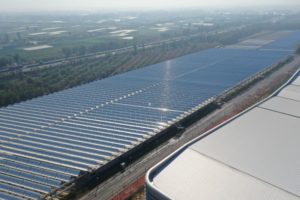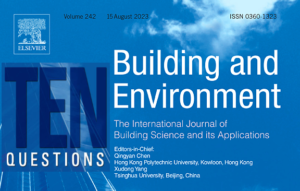Solar showers for displaced people and refugees
April 20, 2018
 The UN Refugee Agency has begun ordering solar water heaters to improve the sanitary conditions in Ugandan refugee camps. The news ties in neatly with the first conference on Energy for Displaced People: A Global Plan of Action for Sustainable Energy Solutions in Situations of Displacement, an event which took place in mid-January in Berlin, Germany, and was attended by more than 100 delegates. The participants agreed to “lay the groundwork for the first-ever global, multi-stakeholder plan to ensure that crisis-affected people gain access to affordable, reliable, sustainable and modern energy services by 2030.”
The UN Refugee Agency has begun ordering solar water heaters to improve the sanitary conditions in Ugandan refugee camps. The news ties in neatly with the first conference on Energy for Displaced People: A Global Plan of Action for Sustainable Energy Solutions in Situations of Displacement, an event which took place in mid-January in Berlin, Germany, and was attended by more than 100 delegates. The participants agreed to “lay the groundwork for the first-ever global, multi-stakeholder plan to ensure that crisis-affected people gain access to affordable, reliable, sustainable and modern energy services by 2030.”One of the co-organisers was the Moving Energy Initiative, or MEI for short. MEI is a coalition of five organisations, namely Energy 4 Impact, Chatham House, Practical Action Consulting, the Norwegian Refugee Council and the UN Refugee Agency, or UNHCR for short. Together, they are assisting camp operators who offer shelter to internally displaced people and refugees in Burkina Faso, Jordan and Kenya. In these countries, sunlight is obviously the most suitable clean energy resource to power and heat the camps: Photovoltaic systems generate electricity, solar lanterns light up the night, solar cookers can be used to prepare food and solar thermal provides hot water for sanitary installations.
Joshua Masinde, Communications Officer for East Africa at Energy 4 Impact, said that MEI projects mainly deployed solar cookers and residential solar systems to generate electricity, but solar thermal was an option gaining in importance. The NRC had delivered 160 solar water heaters to homeowners who had taken in refugees in Ajloun, Irbid and Jerash in Jordan. “Our aim is to prompt private initiative when implementing clean energy projects, to help reduce the use of fossil fuels,” Masinde explained. “Regarding access to energy, we prefer local, market-based solutions which offer the chance for a livelihood.”
Oslo-based Aventa has recently shipped 80 thermosiphon systems to UNHCR to improve the hygienic conditions in 10 refugee camps in Uganda. Ingvild Skjelland, Information Director at Aventa, said that the company’s solar water heater design differed from the one of other brands. “Our solar panels are made from polymers, which eliminates the risk of corrosion. Their low weight also makes them easy to handle,” she explained. Last year, UNHCR representatives visited Aventa’s production facility in Norway and deemed its solutions suitable for their needs. “The next step is to test the feasibility of the design by pre-mounting the devices on small refugee shelters created by Edilsider, a company based in Italy,” she said.
In the years to come, solar thermal systems could be used on a much larger scale. UNHCR’s Lebanon Crisis Response Plan 2017-2020 states a target of more than 290,000 units, half of them for vulnerable Lebanese and displaced Syrians (see the attached document on p. 66). “If fully implemented, this activity would save 750,000 MWh per year,” the plan reads. It describes the USD 261 million project as a sustainable measure which will continue to provide the people of Lebanon with a renewable energy source after the displaced have returned to their home countries.
Organisations and events mentioned in this article:
United Nations High Commissioner for Refugees: http://www.unhcr.org/
Moving Energy Initiative: https://mei.chathamhouse.org/
Aventa AS: http://aventasolar.com/


